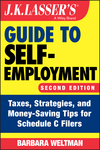Who’s An “Active Participant?”
If you are considered to be an “active participant” in your company’s qualified retirement plan, you can make deductible IRA contributions only if your modified adjusted gross income is below set limits. The determination of who is an active participant may surprise you.
Certainly, you expect to be treated as an active participant if you make salary contributions to your employer’s 401(k) plan. But you can be considered an active participant even if such participation is not so obvious. Take the following case.
An employee was automatically enrolled in his company’s defined benefit (pension) plan. He didn’t know he had been enrolled and he did not make any contributions to this plan. The employer did make contributions, but they would not vest (belong completely) to the employee unless he remained in the plan for five years. Believing he did not have any qualified retirement plan coverage, he deducted a $6,000 contribution to his IRA (he was over age 50 and was able to contribute the basic $5,000 amount plus the $1,000 catch-up amount).
His Form W-2 for the year indicated that he was in fact an active participant (this is shown in Box 13 of the form). Nonetheless, he believed he was entitled to deduct his IRA contribution. He was enrolled in the plan without his knowledge or any action on his part, he did not accrue any benefits because of the vesting rule, and he did not make any contributions on his own behalf.
The Tax Court said he was an active participant nonetheless. Congress decided that mere enrollment amounts to active participant status. The fact that this is inequitable in situations such as in the present case does not change the result.
Amount recognized
The amount of gain reportable and subject to tax. On certain tax-free exchanges of property, gain is not recognized in the year it is realized.



